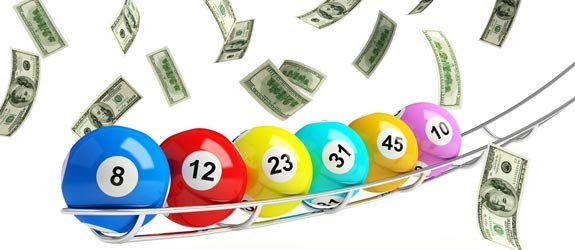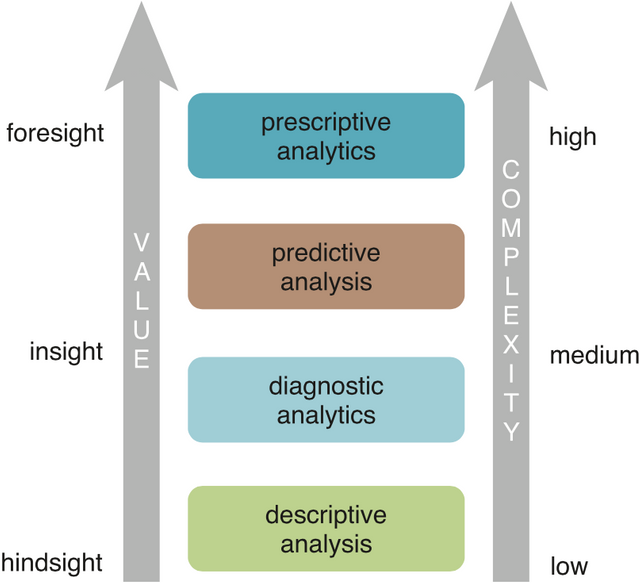Ramblings on the psychology and economics behind steemit, and some ideas for improvement
Full disclosure, I'm not a psychologist, not an economist, nor terribly familiar with Steemit's inner workings... yet… My thoughts on what makes/can make Steemit work.
The Lottery Effect

Lots of bitching and complaining about how folks put tons of effort into a piece and it gets a minnow vote or two and then disappears into oblivion… I get frustrated myself when this happens to me. I accept that, in all likelihood, this article will probably follow that path as well into the deep abyss never to be seen by minnows nor whales, but fuck it I’m gonna write anyway. But why do we minnows keep doing it?
Why do people buy lottery tickets? The odds are horrid. Yet, it's a booming economy. Why do people go on “America’s got Talent” and the like? Why does Vegas thrive, much less exist, especially in arguably the worst place to start a vacation locale? Why does McDonalds have that Monopoly game? Why do people go fishing when it's cheaper, easier, and more efficient to just go buy some fish? They all rely on the same bit of human (animal) nature. We value the chance of a big payout far more than the guarantee of a small one.
When training a dog (and make no mistake we humans are equally a slave to our desires and instincts), you apply a continuous small reward schedule to teach a desired behavior. This is universally understood to be the most effective method. Once the behavior is reliable continuing with this schedule will actually diminish the behavior over time. There must be a switch to a schedule of variable or “random” reward. This will keep that behavior going indefinitely. Ideally the rare reward should be a “jackpot” variety far bigger than the initial rewards… This works in dogs, and it works in people.
In Steemit, there is no initial “training” of the desired behavior (content production, curating, etc) with a regular reward schedule. This falls short of ideal. There is the occasional few cents here or couple bucks there reinforces the desired behaviors (curating, authoring, voting) and keeps hope alive for the big payout and this is what Steemit relies on for user retention. If the big payout never comes, the behavior weakens and extinguishes over time and the user exits the platform eventually.
Constant jackpots also, paradoxically, lead to weaker behavior. Some of the bigger earners on here might find that over time, despite their articles all earning consistent great sums, they might become less motivated to keep providing content. Its just the nature of the animal brain, even though it goes against all logic. It takes a motivated and focused mind to keep grinding out that income.
Interestingly, it is the very nature of the "damnit another article of mine earned me only $0.01" with the clear possibility of the "big win" that keeps users plugging away, and I think that should remain that way.
Some ideas on how to better align the rewards with established psychology:
- Initially, perhaps until statistically determined number of behaviors or certain consistency of behaviors over time, a steemian should be consistently rewarded with small rewards.
- Once the steemian is performing the desired behavior, gradually revert to current de facto method of intermittent small rewards with the occasional jackpot.
- Have a cost associated with a vote. If you vote for content that sucks, you may net lose some infinitesimally small steem power as the reward is less than the cost. If you vote for something that rocks, you net in the positive. This will make folks take their voting more seriously.
Freemium Economics

Freemium Economics have come to dominate the top grossing category of the Apple App store as well as other markets. I think there are many concepts within freemium economics that are relevant to steemian economics.
For those unfamiliar with the concept, compared to traditional buy-to-use software (full price to get full functionality, nothing available for free) or shareware (partial functionality available for free, full price to get full functionality), freemium models give the full functionality away for free but provide incentives for some users to monetize...
In the context of a mobile game this usually is done by making the average player have some limitation to advance their game (usually just time the player must wait to complete some objective) with the option of buying that limitation out of the way (the old "wait 24 hours or use two gems to finish now!" approach). The cost is usually small enough to seem trivial to most... after all $0.99 to avoid waiting 24hrs and keep playing right now seems like nothing especially when you just ordered a draft beer for $5.
This is what has lead this model to dominate the market. This is why games like Clash of Clans posted $2.4 Billion in revenue for 2015. Not bad for a company of 180 people. Nevermind their other 8 games they are making tons on.
Now there has been a good deal of study on freemium economics. Typically only 5% of users ever monetize in a freemium game, which is the other end of the spectrum compared to other price models. I'd guess Steemit is somewhere in that neighborhood as well. So, I propose much research done on freemium economics likely can be applied to Steemit to achieve success.
Freemium economics platforms rely, as in live or die, on the size of their user base. Given the extremely low monetization rate it is absolutely critical to maximize the user base. Steemit will be no different. There should be great focus and effort put into growing the user base, albeit without making it have the feel like an over crowded fish farm pond (to keep the aquatic metaphor going)… a strong, steady, but metered growth should be the target.
The concept of Lifetime Customer Value (LTV) can be determined for a given user of a game based on their observed behavior to determine with some degree of accuracy their lifetime value to the platform. These high value users are important and should be catered to in some way. Monetizing Steemit users are great, but clearly content producers are equally critical… some great content producers are valued at present, other great content producers are undiscovered and get frustrated. The various “hidden gems” posts I see as a community response to this. Well done, but we need to do better here somehow.
Some ideas on how to leverage freemium economics concepts in Steemit:
- Mobile integration, mobile integration, mobile integration… Two-thirds of Americans have smartphones and for many it is a key entry point to the internet. 7% of Americans’ smartphones are their only access point for to the internet. A must for a greater user base.
- Give users a way to monetize in very small incremental amounts, and make it easy to do. (Mobile app developers, read “Click here to buy a Steem Dollar” and handle the backend work to turn that $0.99 USD into Steem/SD/SP/etc.
- It would be nice to have a way to monetize directly to a content author. There have been articles I was sad were not noticed and my piss-ant vote didn’t do much to help the author out. Some of them I’d have gladly thrown a couple bucks or even $5 at, well above and beyond my vote’s value. If I feel this way, under the rule of “5%” stated above, there are at least some small minority that also do and will monetize. GoFundMe and the like demonstrate the willingness of people to monetarily contribute to ideas they value.
Predictive & Prescriptive Analytics
Analytics is the discipline of applying various machine learning techniques to big data datasets in order to predict outcomes based on prior and current data. There are 4 types of analytics used with big data. Descriptive, diagnostic, predictive, and prescriptive. “Big Data” is a dataset that has one or more of the qualities:
- Volume - Characterized by the volume of that data irrespective of other qualities.
- Velocity - Characterized by its velocity, typically at very high rates of speed, such as live streams of stock market bid-sell-and- spread data for huge volumes of traded securities or game positional and event data from massively multiplayer online games.
- Variety - Characterized by its variety such as data that spans a wide range of heterogeneous data sources.
- Veracity - Characterized by its veracity which can be loosely described as its “signal to noise ratio”. Large datasets with too high of an occurrence of irrelevant, erroneous, or otherwise low-value data intermingled with the “good” data can be problematic to the analytic process.
- Value - Characterized by its value, typically with respect to its quality, quantity, age, or similar qualities.

Descriptive analytics are used on data in order to characterize or discover qualities about events which have already occurred. Approximately 80% of analytics fall under the descriptive type. The results of the descriptive analytics are typically used to drive future decision making in the same problem space.
Diagnostic analytics expand upon descriptive analytics in order to attempt to discover the cause of some fact or data item described through descriptive analytics. While still post-event in focus, this form of analytics can provide valuable insight into not just what occurred, but why it occurred.
Predictive analytics attempt to predict outcomes based on analysis of prior and current data. Predictive analytics contrast to descriptive and diagnostic analytics by shifting the focus of the results of the data analytics to provide information to drive decisions regarding future or current- and-unfinished events. The shift allows for the discovery of both risks and opportunities that may present themselves. This characterizes a shift from reactive analytics to proactive analytics as the information can be leveraged to describe what action should be taken next. This type of analytics requires considerably more skill due to the advanced techniques leveraged to produce reliable information.
Prescriptive analytics encompass the most advanced form of analytics. Prescriptive analytics provide the most value as they prescribe why a given action should be followed versus simply which action should be followed by leveraging internal and external data, and as such is the most difficult to conduct.
Steemit certainly has big data with many if not all of the above data qualities, and predictive or prescriptive analytics can be applied to extract knowledge with regard to:
- Cross-selling - Predictive analytics can be leveraged in order to discover relevant content which will likely appeal to and be upvoted/engaged by its consumers. This also applies to competing platforms from which content and users can be directed to or sourced from.
- User Behavior Insight - Predictive analytics can be leveraged in order to discover attitudes, motivations, lifestyle, habits, spending habits, etc. Great insight into a given user can be had which in turn be used to motivate that user to monetize with regard to timing, mood, engagement level, etc. Perhaps
- User Retention - Predictive analytics can be used to assess and influence consumer satisfaction, content engagement, and the role of how factors such as user’s investment or expenditures, affect the community’s retention
- Effort Elasticity of Engagement is a term introduced to describe the relationship between the level of effort, in terms of user actions and behaviors or a user’s time, the user must expend and the negative correlation with user engagement. Most applications of the freemium model that have met with great success within the mobile application space typically allow the consumer to expend large amounts of time or effort in order to gain some premium feature, with the option of monetizing in order to bypass the required effort. Steemit does this currently through the ability to monetize and increase Steem Power (the reward), or slowly try to grind out that Steem Power through effort by some effort/reward ratio. By applying predictive analytics, the platform can determine the community’s or the individual user’s appetite for effort. Using this information the platform can dynamically tailor the required effort/reward ratio to maximize consumer engagement.
This knowledge above can then be used in an automated fashion to adjust the rewards for behaviors in order to maximize user happiness and willingness to monetize, provide content, curate, or do any other desired behavior. As an example, for a given user (any minnow) a $5 reward may be motivating for providing content, while for another user (@dollarvigilante, @stellabelle, etc) $5 may be discouraging. If the reward is adapted dynamically to be “enough” to motivate a given user, then everyone wins… the community gets great content and the author is happy.
There may be a perceived issue of it being unfair to reward one user more than another purely based on the relative value of a given reward for that user. This issue of “fairness” in decreasing a reward for one user who is easily motivated and increasing the reward for a user who not such a “cheap date” is moot. The dose of a painkiller that eases my pain may be more or less than the dose that works for another… I don’t care what their dose is so long as my dose is right. The world isn't a "fair" place so to expect everyone to be rewarded equally here is foolish anyway.
Some ideas on how to leverage predictive and/or prescriptive analytics in steemit:
- Reward Adjustment - Adjust rewards based on a given users effort/reward appetite, level of engagement, monetization rate or willingness, or any other factor identified
- User acquisition & retention - Enhance acquisition by engaging users on deemed likely to monetize or engage from neighboring platforms. Enhance retention by engaging existing users with content from external sources.
- Monetization, Authoring, and Curation Rates - Enhance desirable behavior rates in users identified as high lifetime value with extra incentivizing. Enhance desirable behavior rates in users having low lifetime value by increasing engagement and thus increasing lifetime value.
On a side note
We have whales, dolphins, minnows... the ocean is a big place with more variety than that. I propose we introduce the concept of the Isopod. Introducing Bathynomus giganteus the deep ocean scavenger.

Ugly has it may seem, its an important part of the ecosystem. Searching the ocean floor, it scavenges upon the detritus and waste in the abyss. Perhaps we should incentivize the behavior of "reviving" undiscovered content that sank to the deep ocean. It would discourage reposting of the same thing, and would encourage some minority to go look for hidden gems long forgotten while helping to combat the issue of the little minnow that just can't get noticed despite their stellar content. After all, if I'm a minnow writing great content for years on end with little reward, I should be valued and rewarded somehow vice having my content just collect dust.
Thoughts on all of the above? Written a little off the cuff so apologize for any grammar/flow issues. Bit of a brain dump here.
A bit too long didn't have time to go through it all. What I can do to contribute atm is posting this article from yesterday where lost content is discussed:
https://steemit.com/theoretical/@theoretical/improving-the-steem-platform-for-long-term-content
I will try to get back later and to read it fully.
Thanks for the feedback! I actually tried to trim it down a bit but perhaps it should have really been split into two articles, or possible three. I'll checkout that link you provided now. Cheers!
The dog training analogy never occurred to me till now. I suppose I am just being trained and rewarded with a scooby snack now and then. Maybe half a scooby snack:)
I didn't realize it until I started really training dogs. It was only then I realize that the techniques that work on them work equally well on us. We are all slaves to the same instincts, and respond to environmental stimuli in the same basic way.
When I'm explaining to people how to interact with a dog they don't know I use the analogy of confronting a stranger in a bar. I do this because the steps of posturing between two people in a bar to decide who the dominant party is, is nearly identical to what almost all other animals do in the animal kingdom. It seems to then make perfect sense to them. Maybe I'll write an article on that next.
Thanks for the feedback!
Hmm. How would you reward the isopod behaviour?
my initial thoughts would be something along the lines of how an initial upvote for a post that eventually goes viral has more value than an initial vote on a post that dies... if a post has little or no votes and goes stagnant but someone's (re)discovery leads to virality of the post, that (re)discovery vote should have extra value. I'm sure there are many other ways to incentivize the behavior. That part was a bit of a last minute brainstorm I haven't thought much on yet.
Some really good points here, although much more discussion would be needed before implementation. I like the freemium idea of 'buy a steem dollar' and also the tipping mechanic option.
Thank you for the effort that it took to put this post together.
Thanks! Yeah this was sort of a quick and dirty keyboard dump to hopefully kick of discussion. I expect some of the points are dead ends or at ends with the platforms goals, problematic to implement, or otherwise non-starters... hopefully some have strong value as things to consider and realize in the future.
I really think there should be some mechanism where I can, despite my poor voting power, contribute greatly to an author if I so chose. Certainly the author could direct us how to do so with a "accepting donations at this address" type of line, but the platform should implement and facilitate this instead I think.
"Have a cost associated with a vote. If you vote for content that sucks, you may net lose some infinitesimally small steem power as the reward is less than the cost. If you vote for something that rocks, you net in the positive. This will make folks take their voting more seriously."
There is a cost, an opportunity cost of lost potential curation rewards. Also having an actual cost in terms of SP would heavily reduce the exposure minnows would get. People would just gravitate towards the most popular authors even more so than now.
I'd recommend getting on Steemit.Chat and talking to people on there, there's a post promotion section and you'll get far more exposure than posting here directly :)
Thanks. I shall make my debut in steemit.chat now.
I figured some of the things I was trying to address have been approached from another angle like that, or some of my assumptions might be flawed. Thanks for the feedback. Cheers!